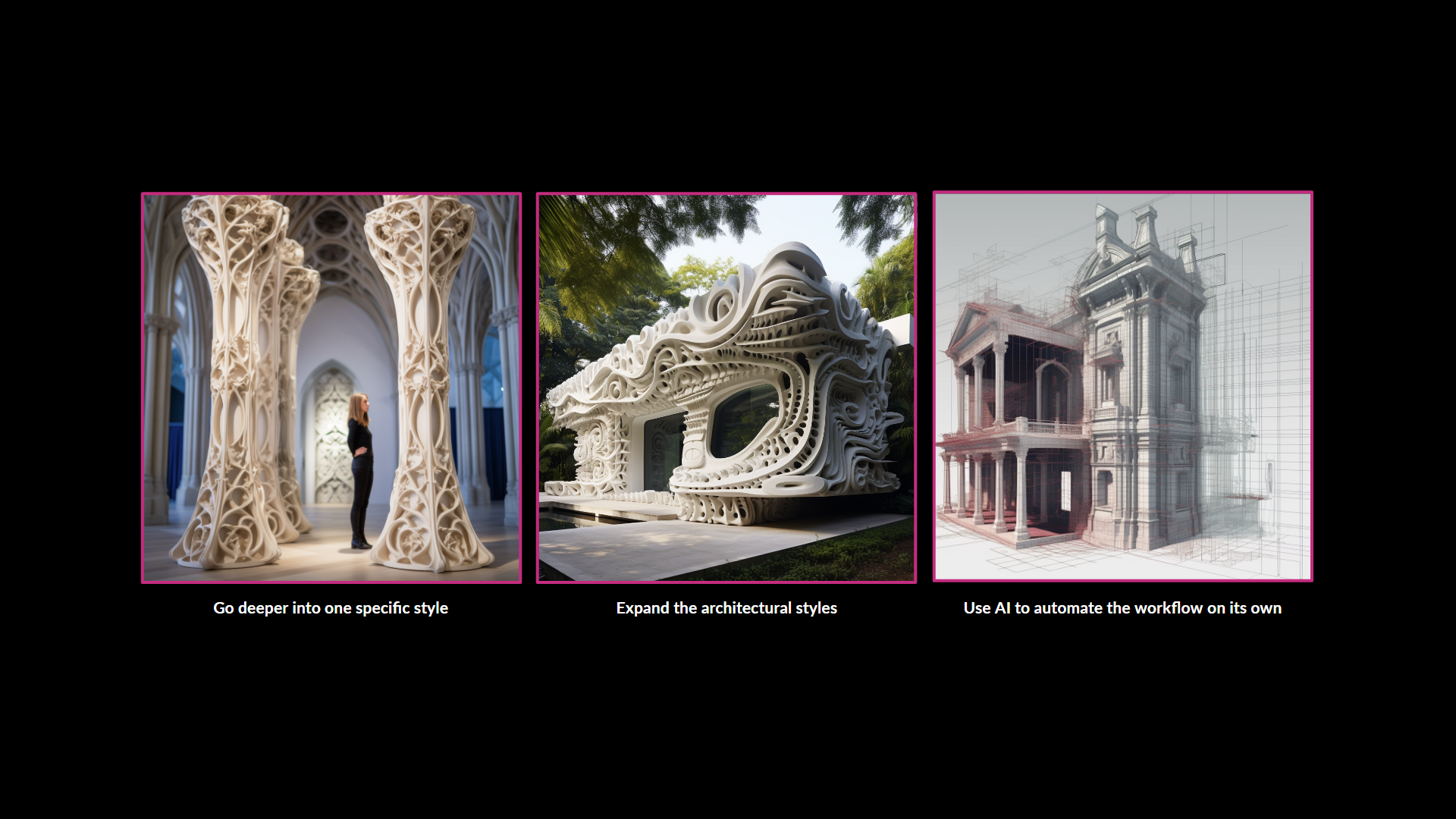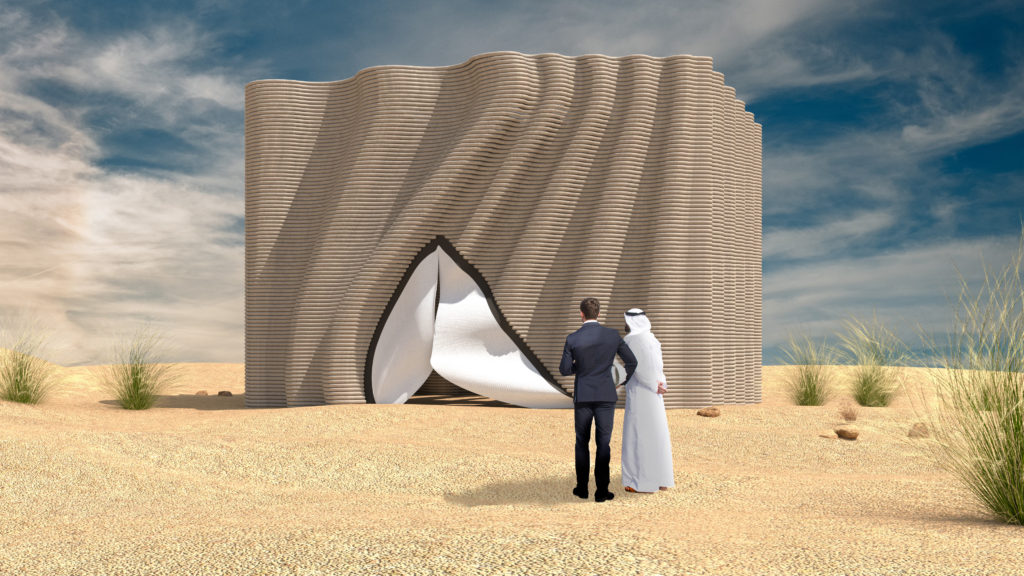In the past years, the number of 3D Concrete Printed projects has been increasing exponentially. Even though it is becoming an important part of the construction industry, large-scale 3D-printed buildings have shown a lack of aesthetics, as flat walls are normally used, and sometimes even plastered. On the other hand, small-scale printed projects have shown the degree of complexity that can be achieved, but struggle to establish a clear identity or context.
Digital Heritage aims to address the challenge of incorporating complex designs into 3D concrete printing, using heritage as the aesthetic driver.
Analyzing the main characteristics of Gothic, Islamic, and Neoclassical styles in columns, arches, and, facades, and creating a workflow with the help of computational tools that proposes a contemporary interpretation of the architectural element, that can be customized, with the objective of assessing geometrical and structural viability of additive manufacturing with concrete.
Concrete has been used with this technology because of its great properties. First of all, the compressive strength gives it structural qualities, is durable to environmental factors that it can be exposed to, and is affordable and available almost anywhere in the world.
Strength: The compressive strength of concrete gives structural properties
Durability: Concrete is durable to environmental factors it can exposed to. It varies according to the ratio of cement in the mix
Availability & Affordability: Locally produced, widely available and suitable to build at a low cost without compromising quality or strength
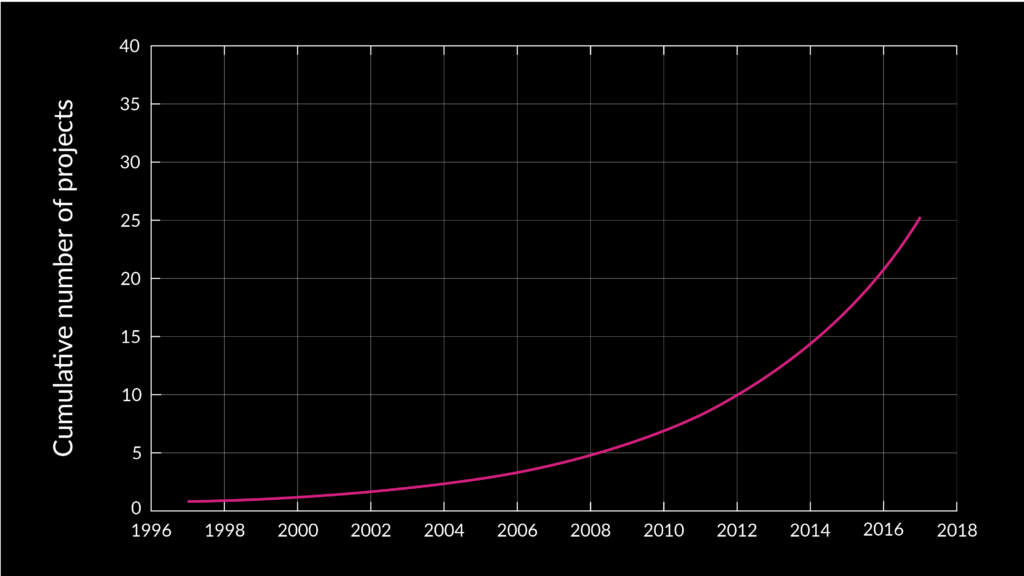
It is still a relatively new technology, but as it continues to develop, it is becoming an important part of the construction industry.
As we can see in this chart, the number of projects printed with concrete has been increasing exponentially over the past years.
Aesthetics Big Scale
Now a days, there are several large commercial 3D printed buildings with concrete, but most of them lack of aesthetics. They have flat walls, some of them are even plastered, hiding in a way the fact that is 3D printed.
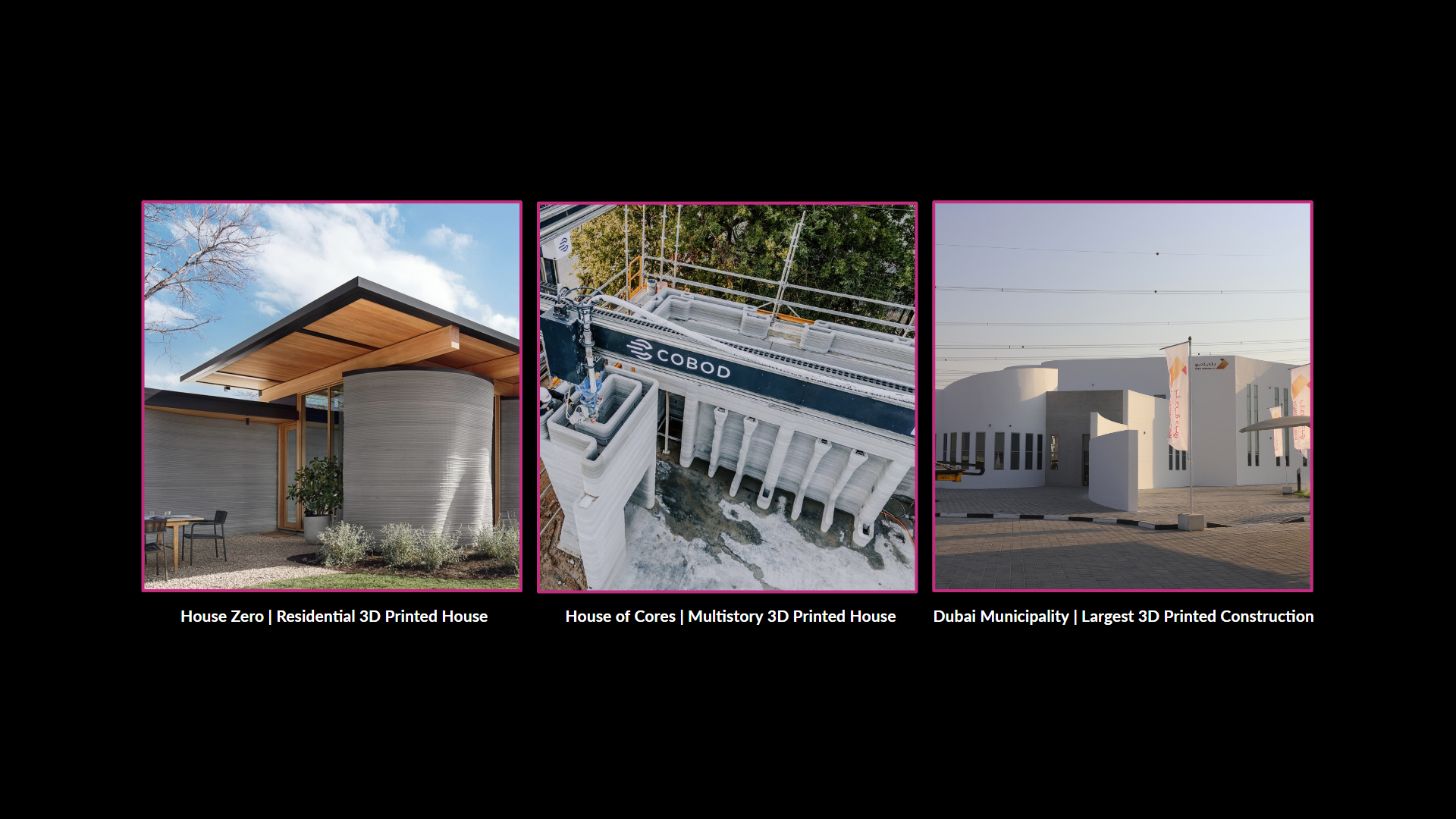
Aesthetics Small Scale
There are a lot of examples in small scale where we can see the degree of complexity 3DCP can achieve. But they are not connected to an identity or context
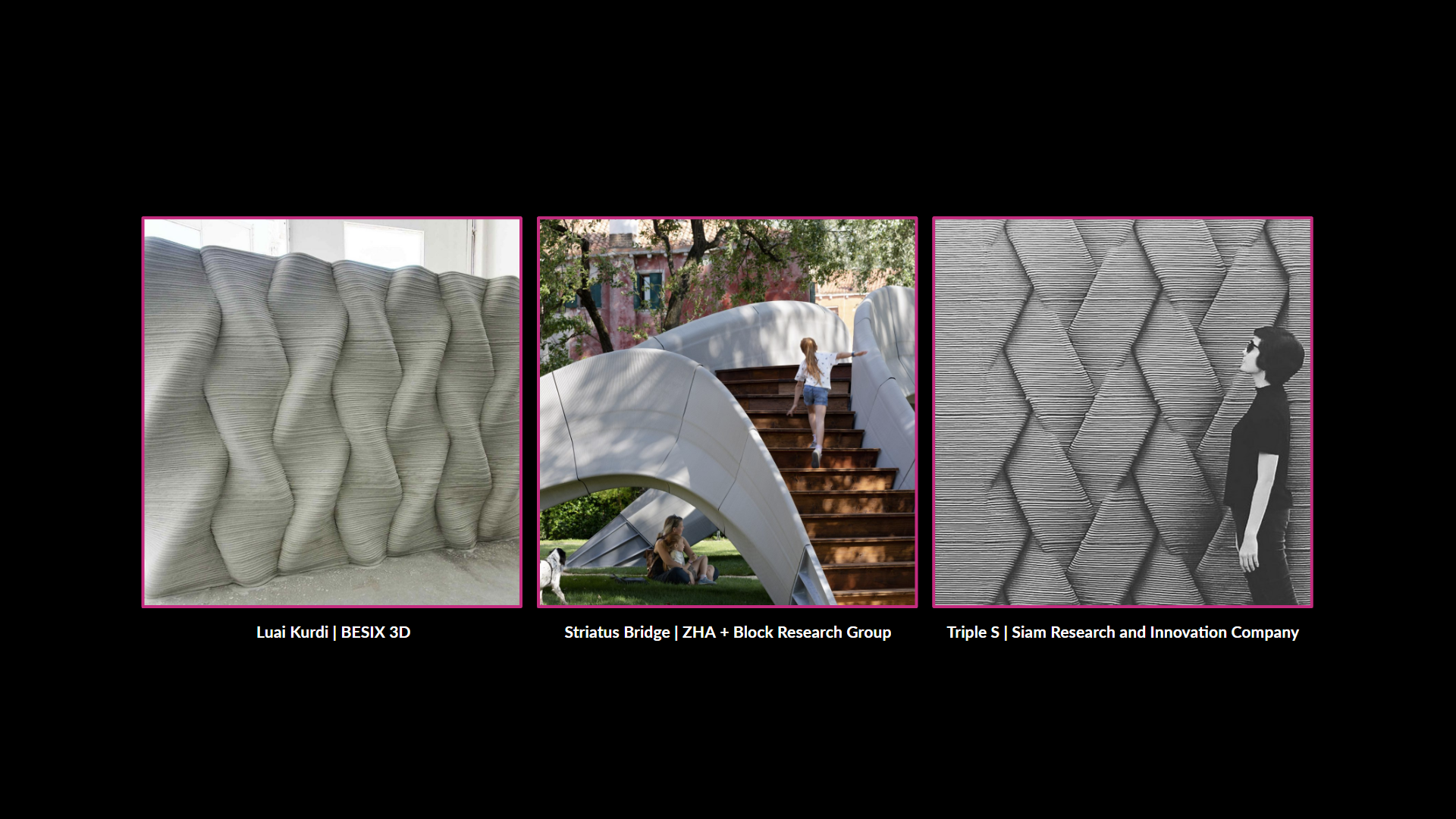
Heritage is important for preserving cultural identity and architectural legacy. It represents a physical link to the past and provides an opportunity for future generations to learn from and appreciate the architecture of their ancestors.
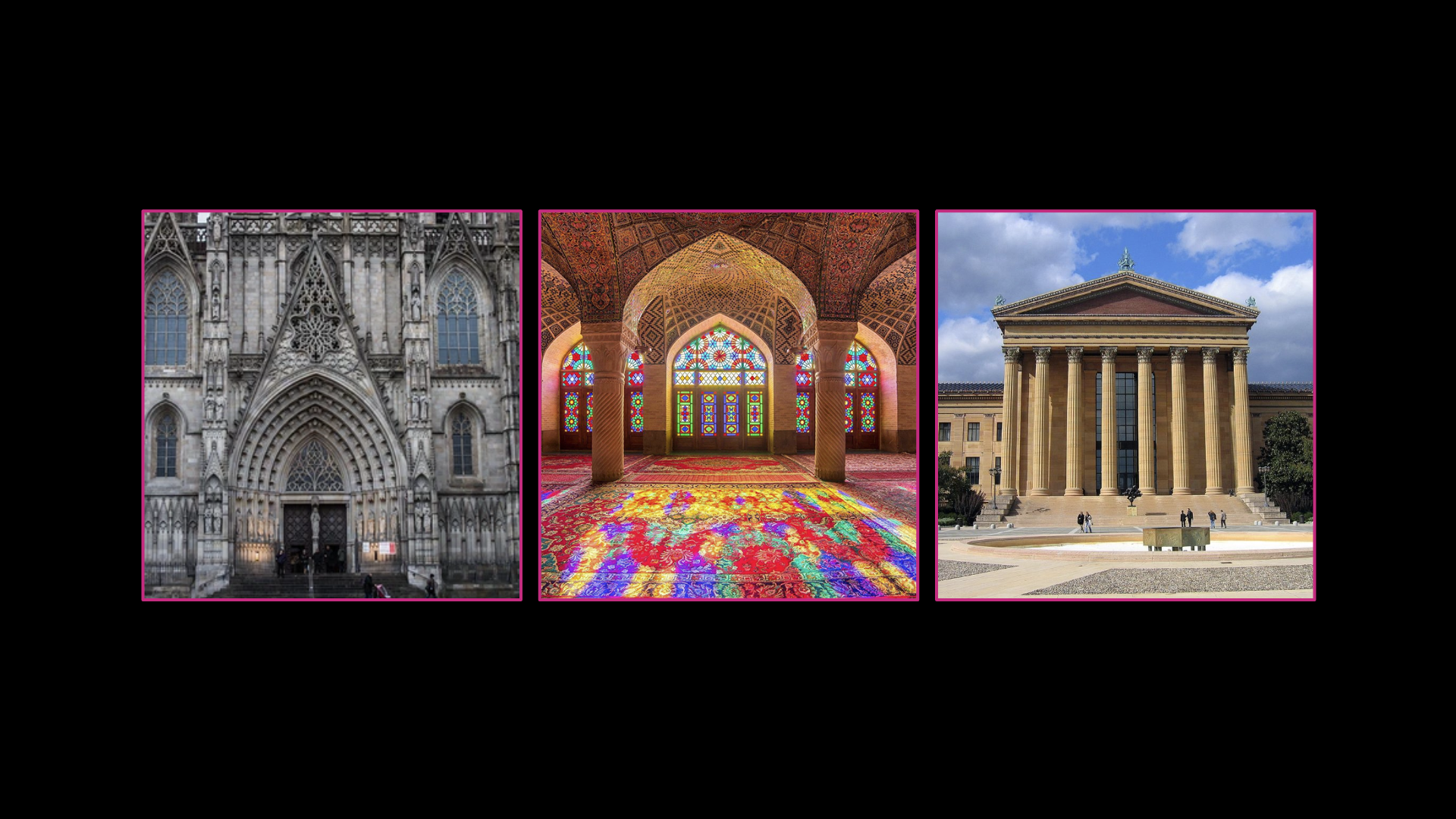
State of the Art (Culture and Digital Fabrication)
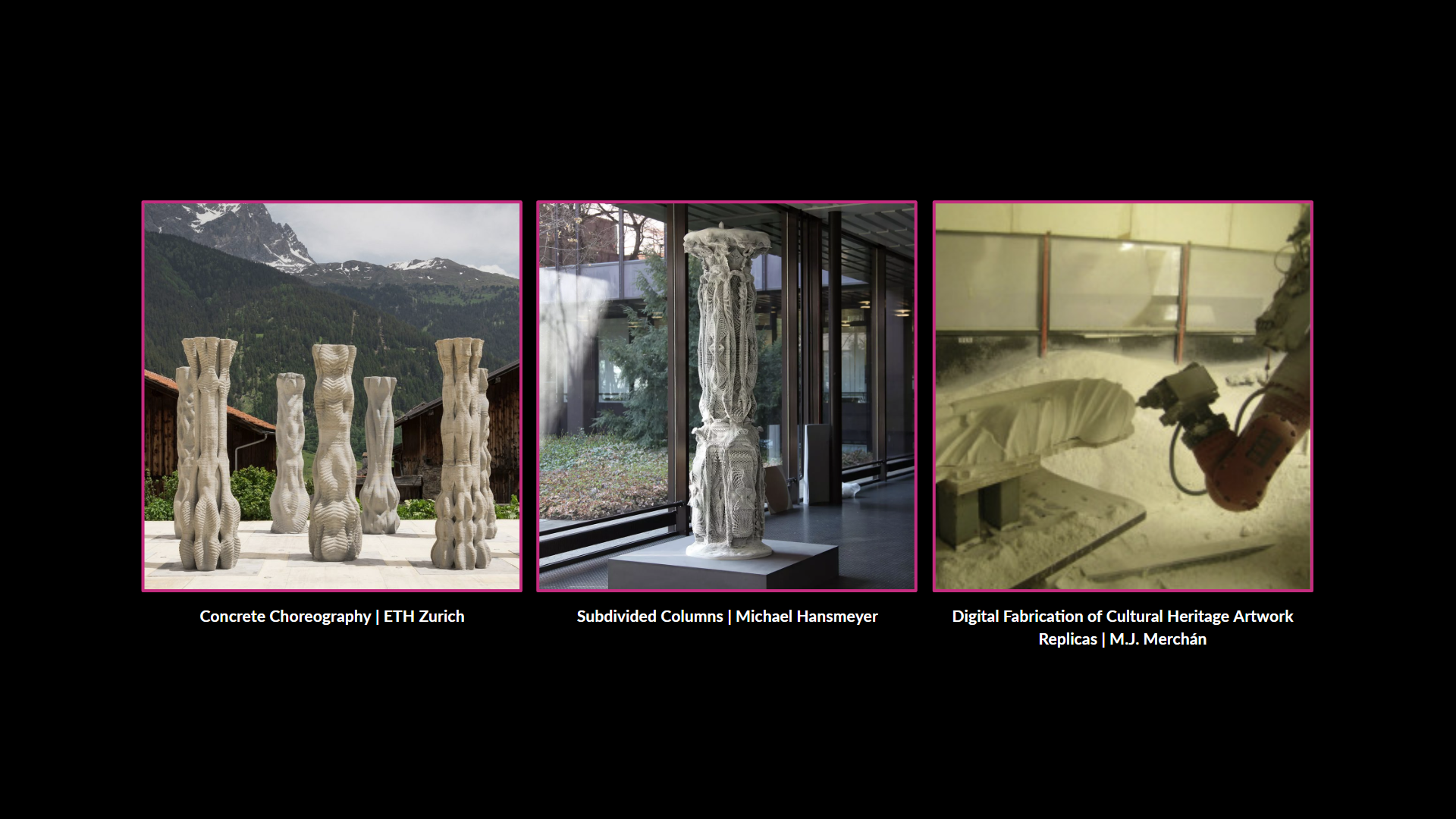
Reasearch Question
How can architectural elements be interpreted to produce a cultural heritage driven, contemporary design, that allow customization and can be applied using additive manufacturing?
Workflow
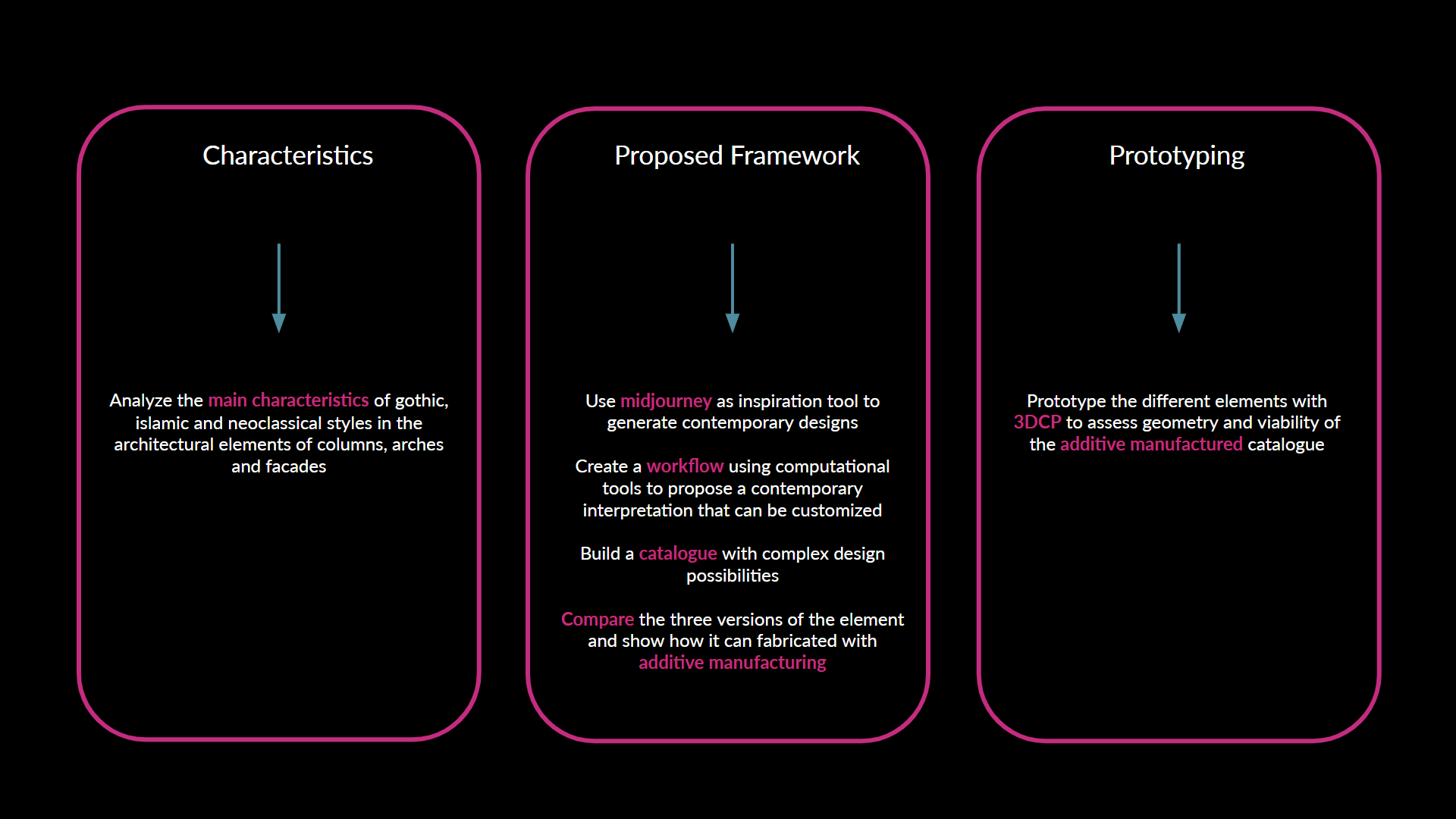
Gothic Column
Main Characteristics
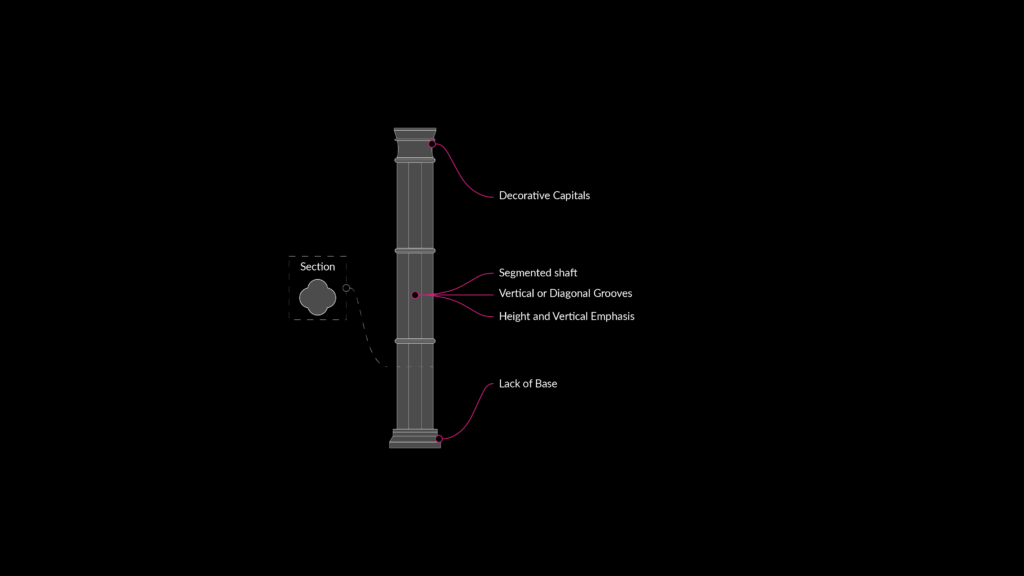
Midjourney Exploration
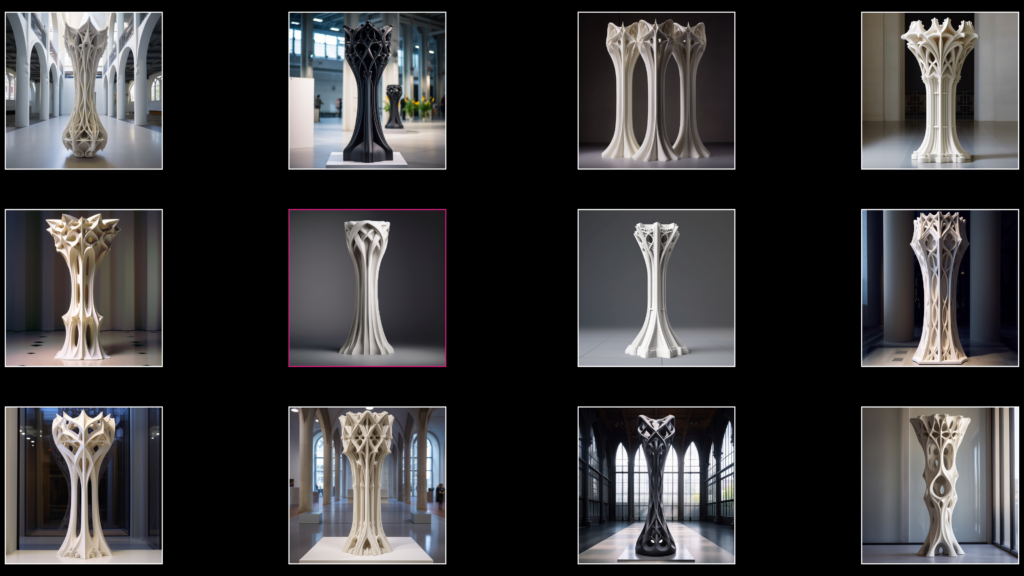
Proposal
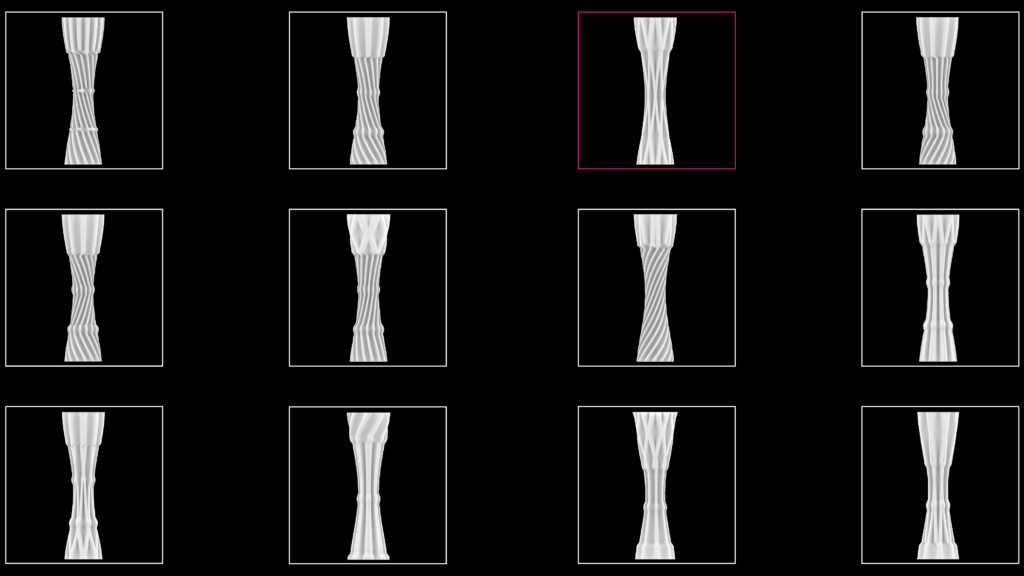
Comparison
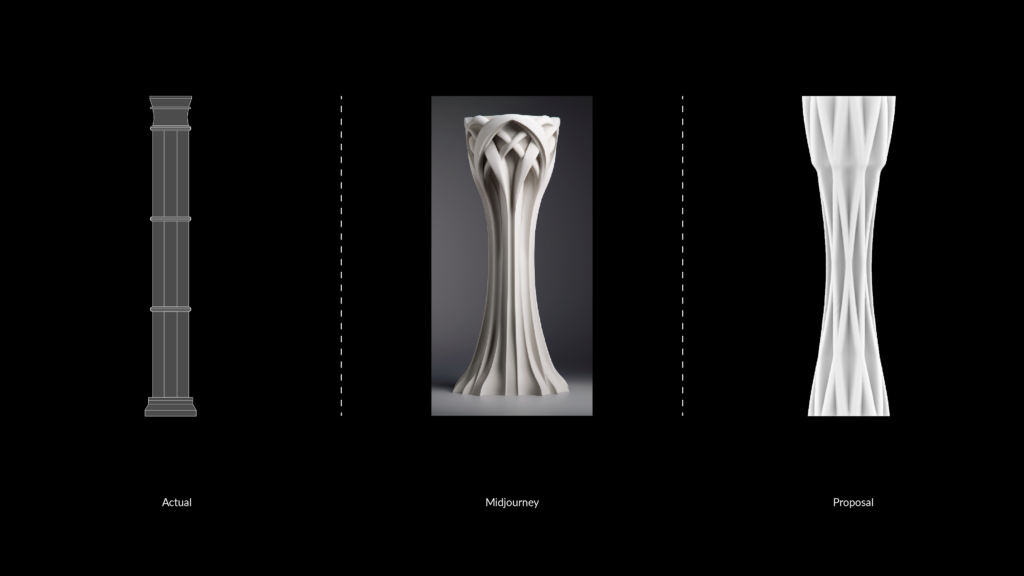
Islamic Column
Main Characteristics
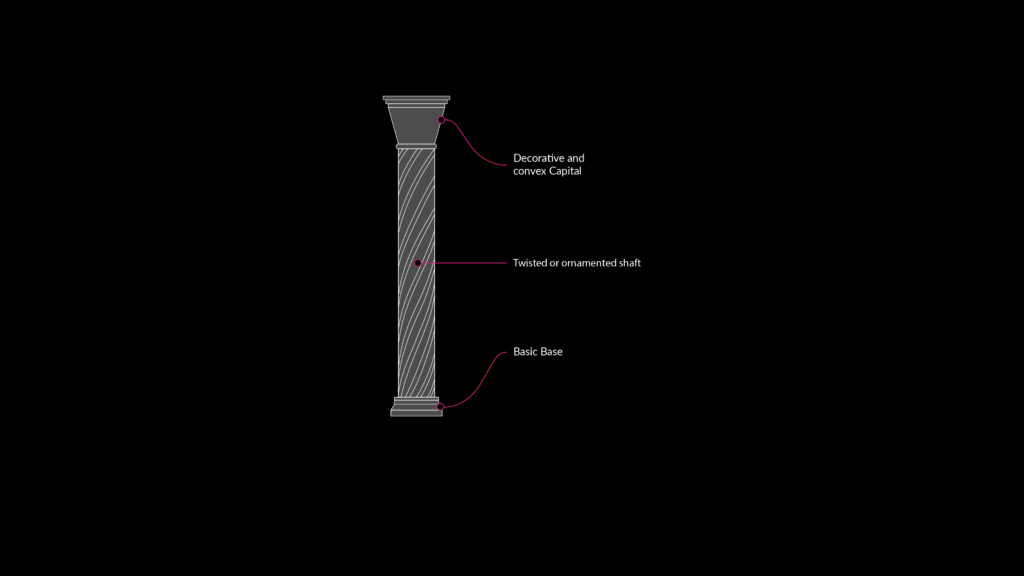
Midjourney
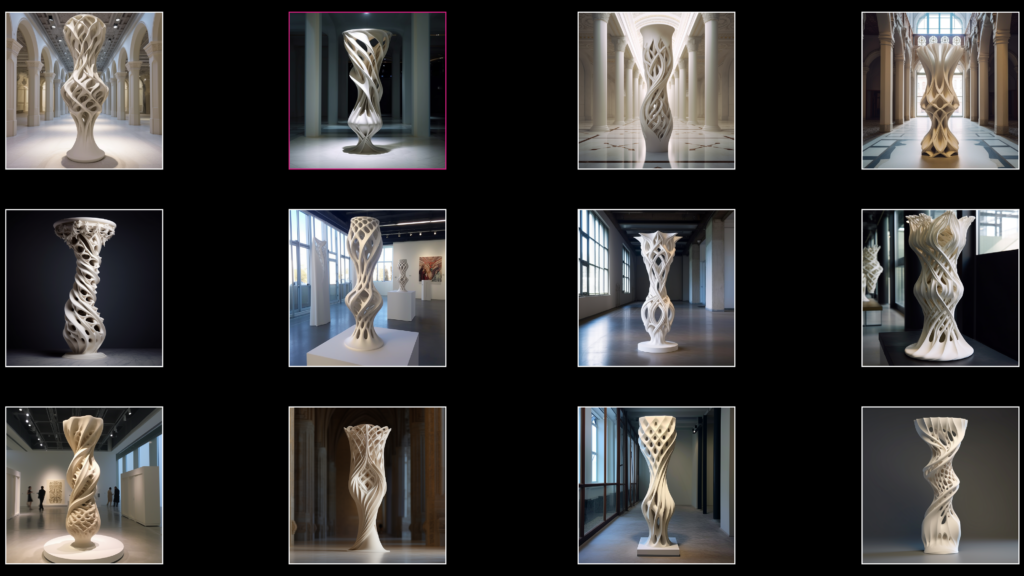
Proposal
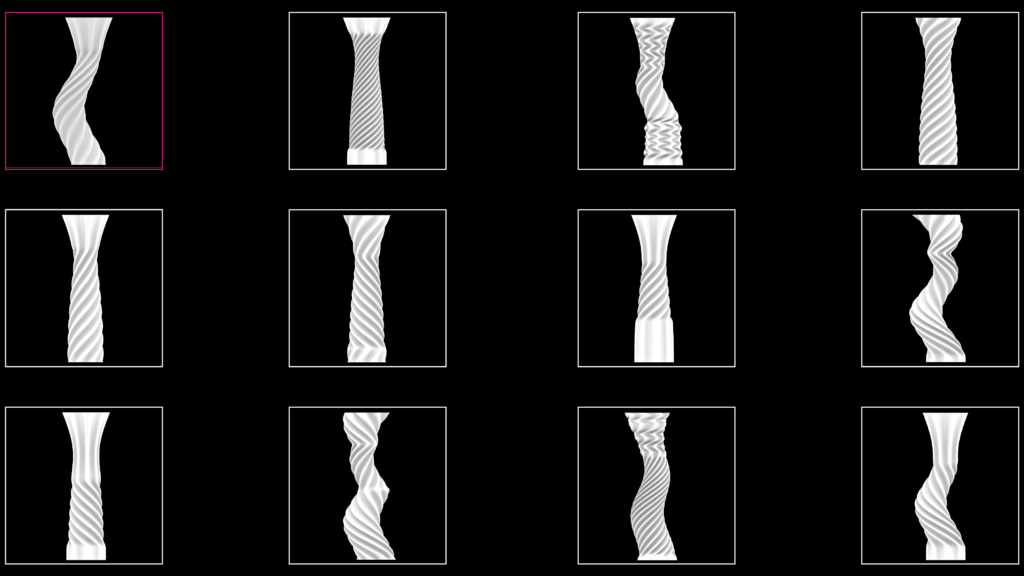
Comparison
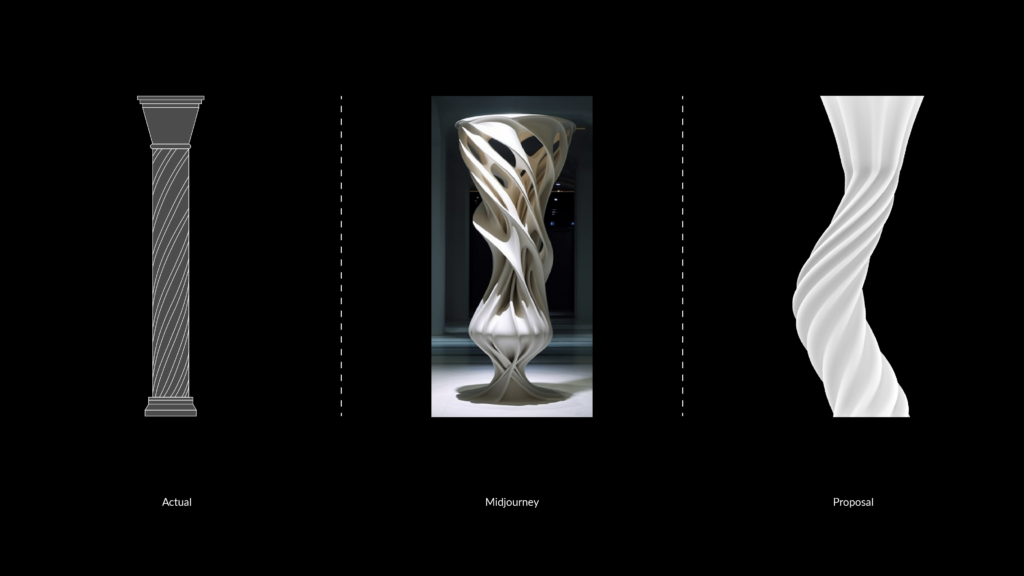
Neoclassical Column
Main Characteristics
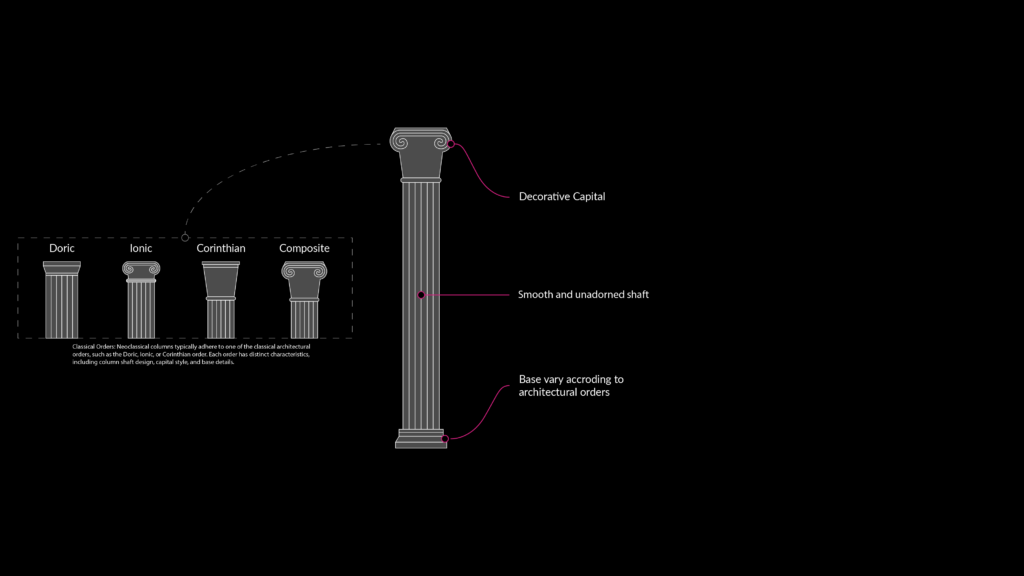
Midjourney
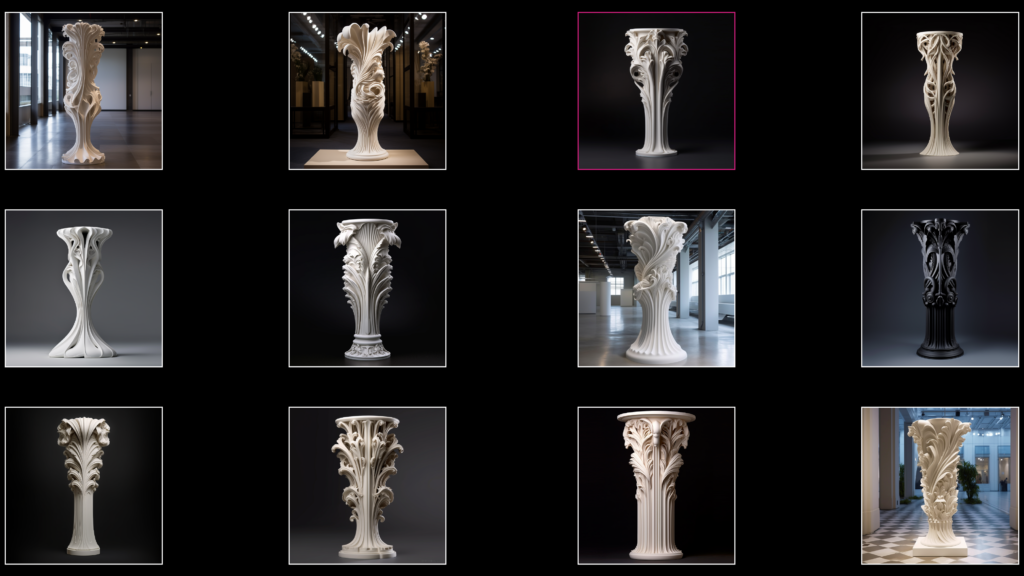
Proposal
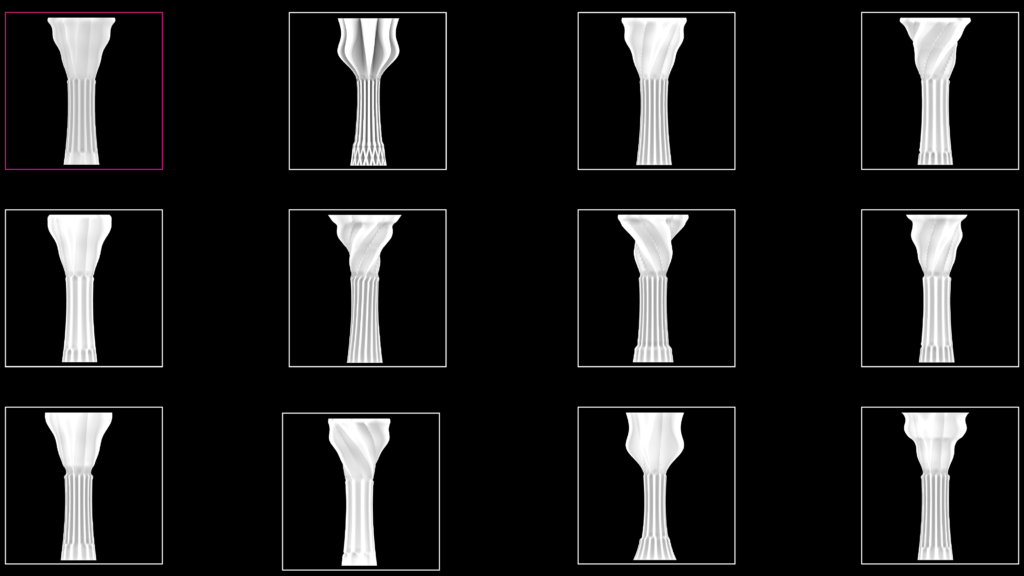
Comparison
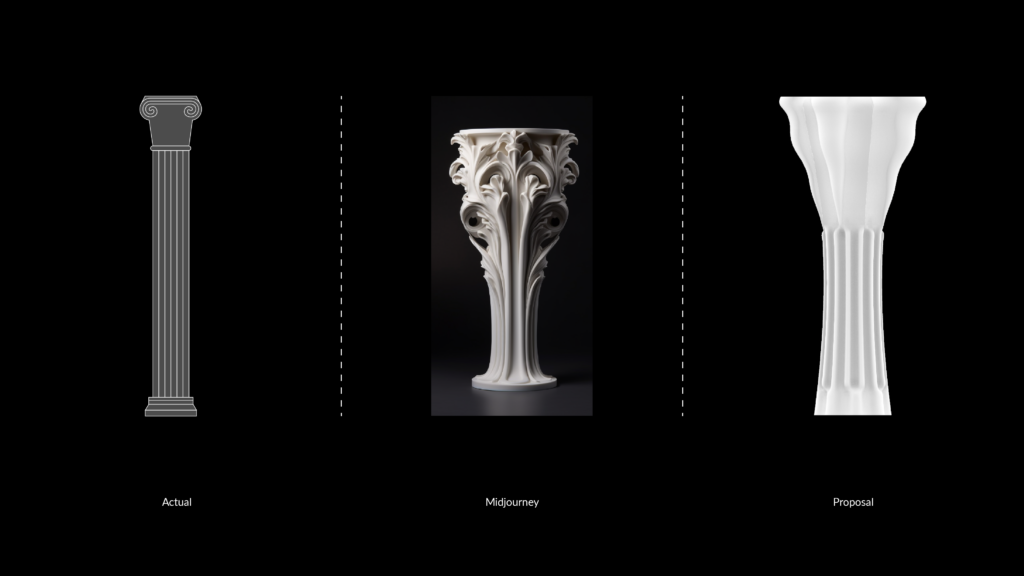
Gothic Arch
Main Characteristics
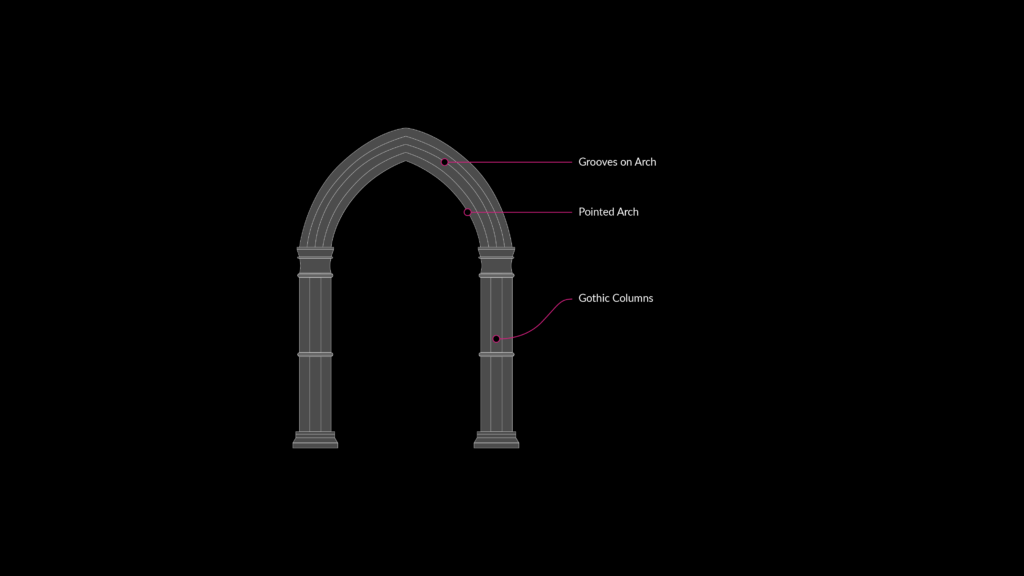
Midjourney
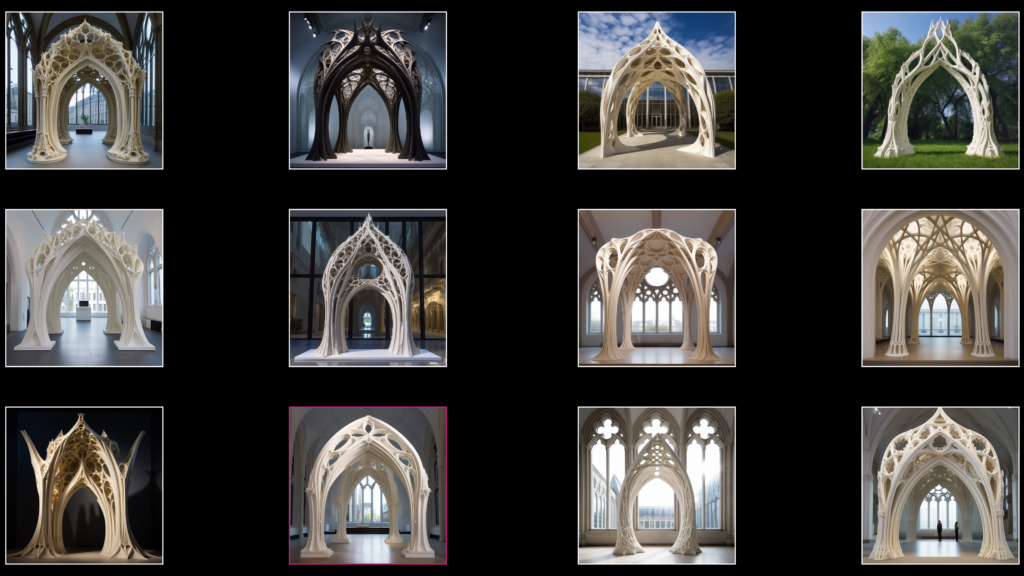
Proposal
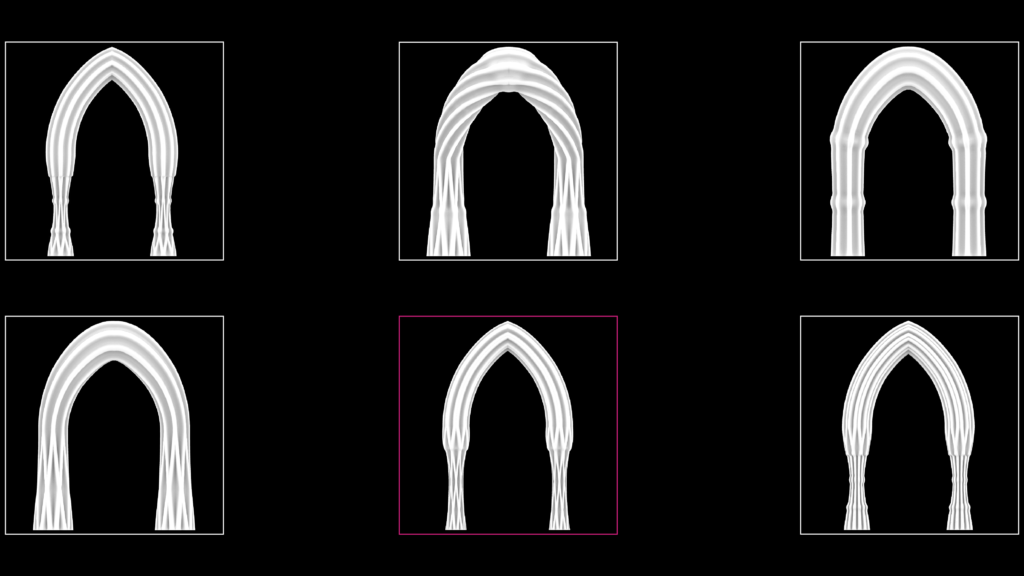
Comparison
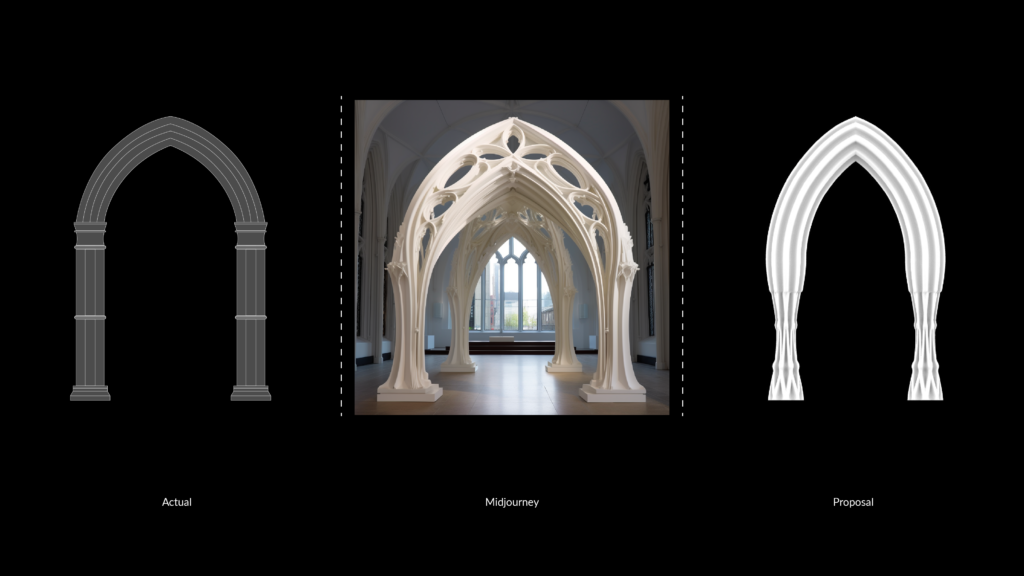
Islamic Arch
Main Characteristics
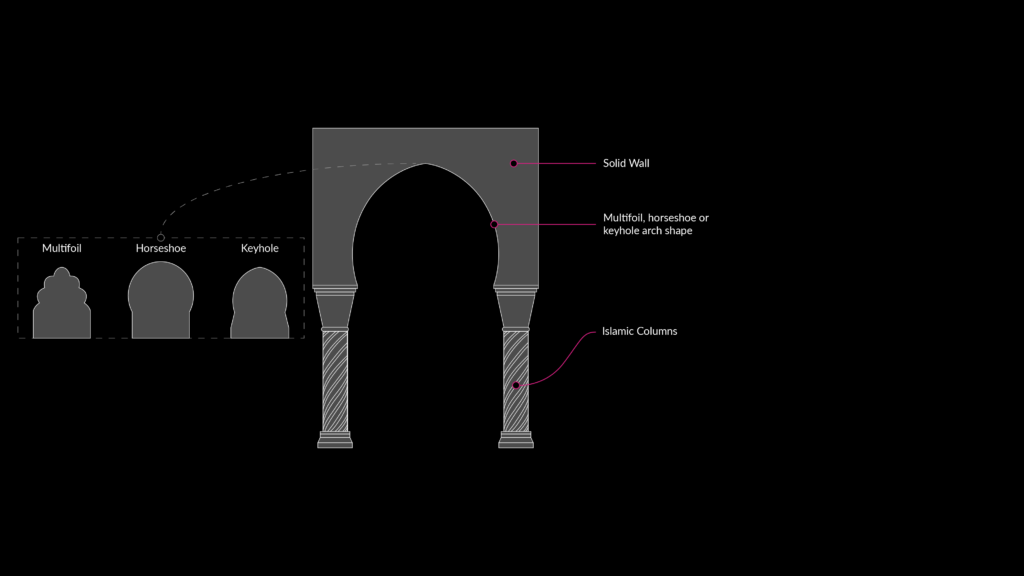
Midjourney
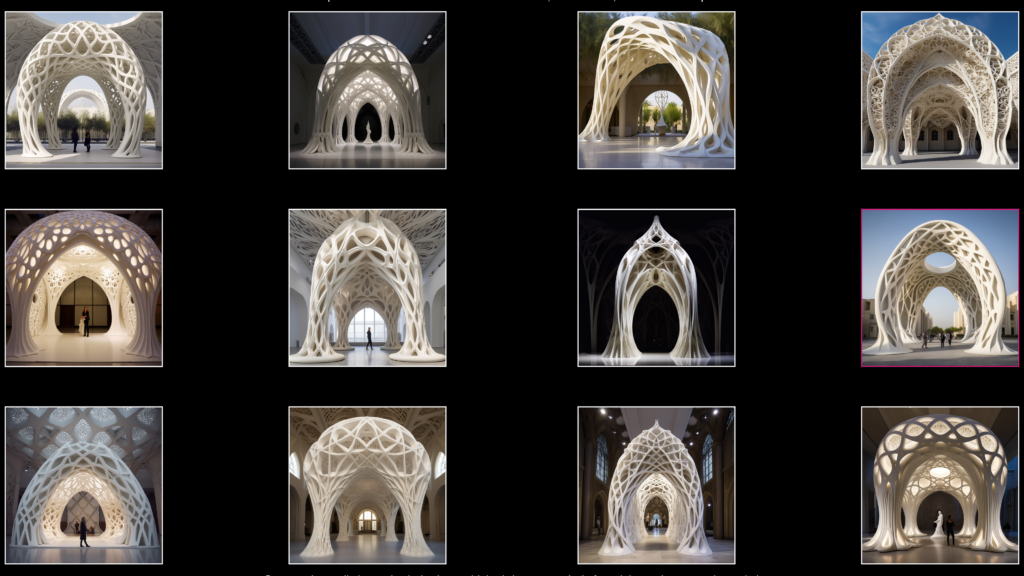
Proposal
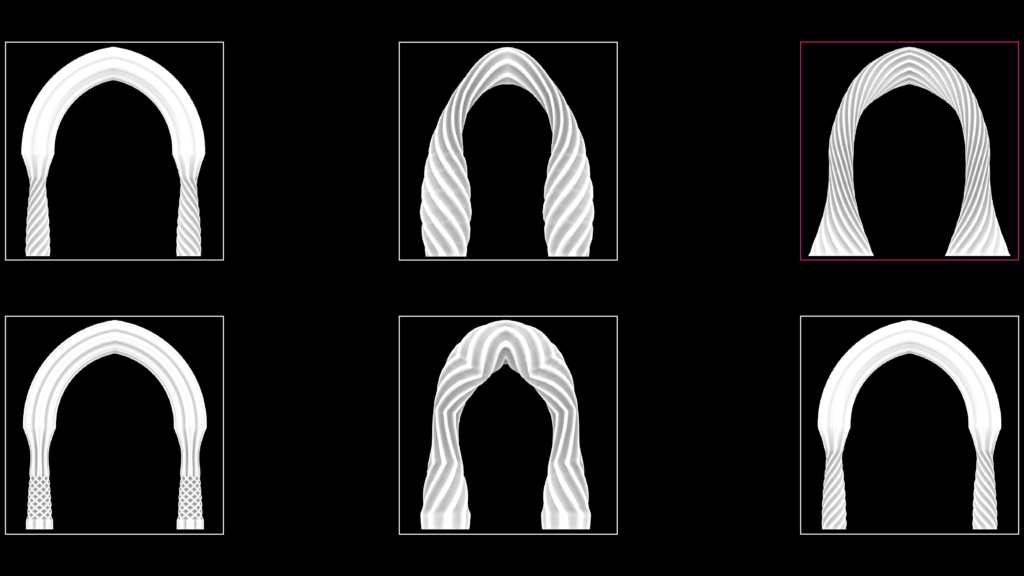
Comparison
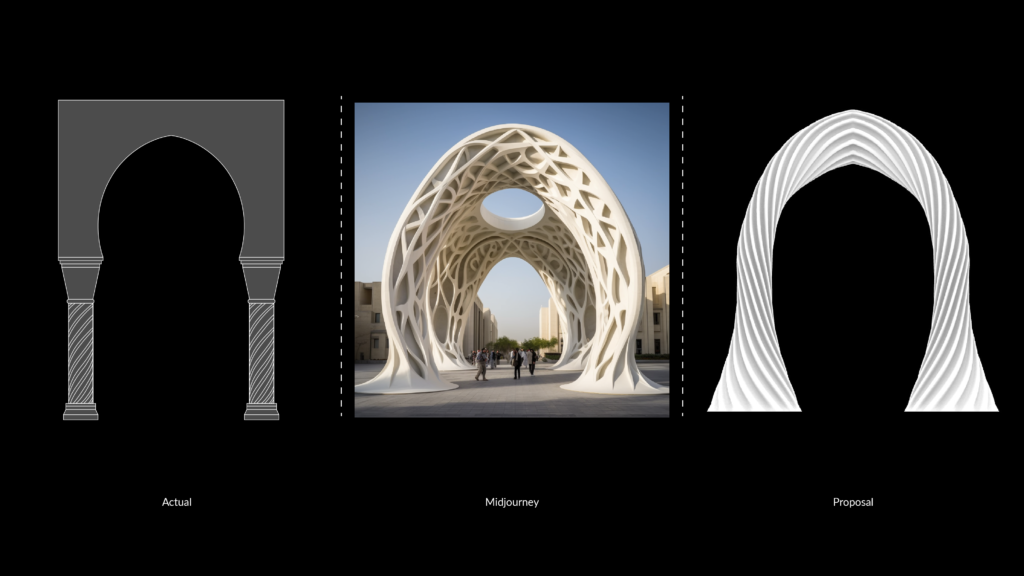
Neoclassical Arch
Main Characteristics
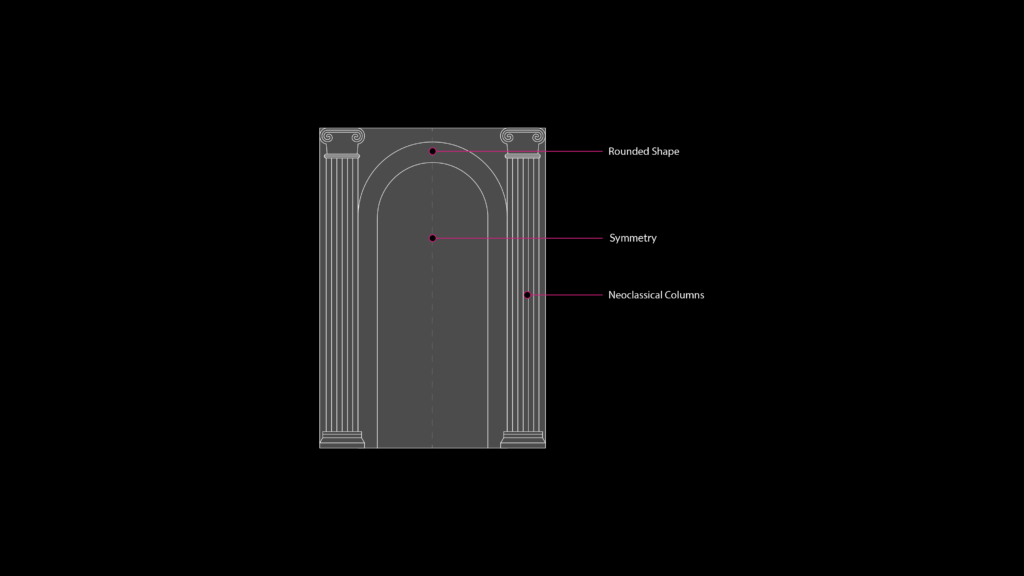
Midjourney
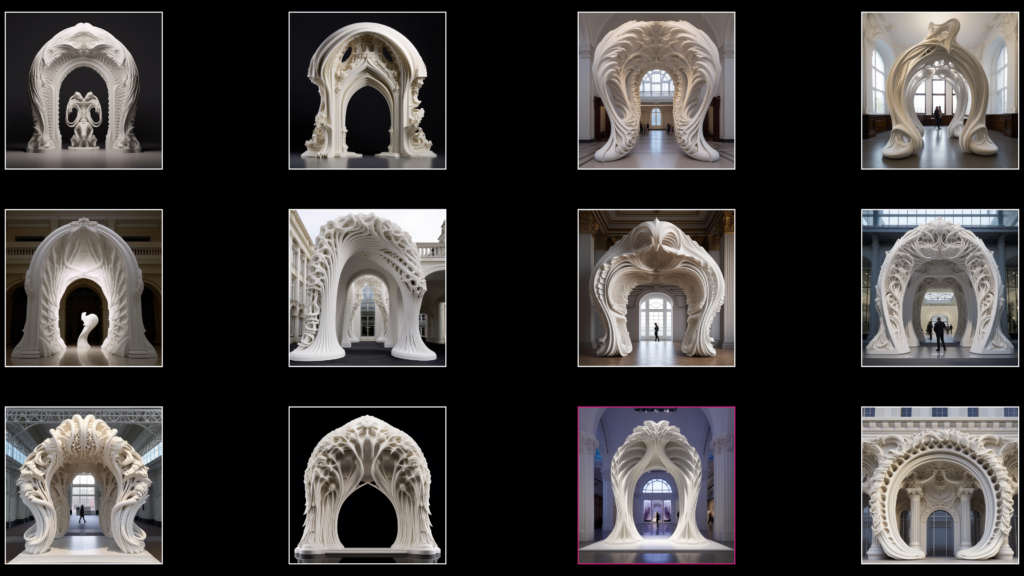
Proposal
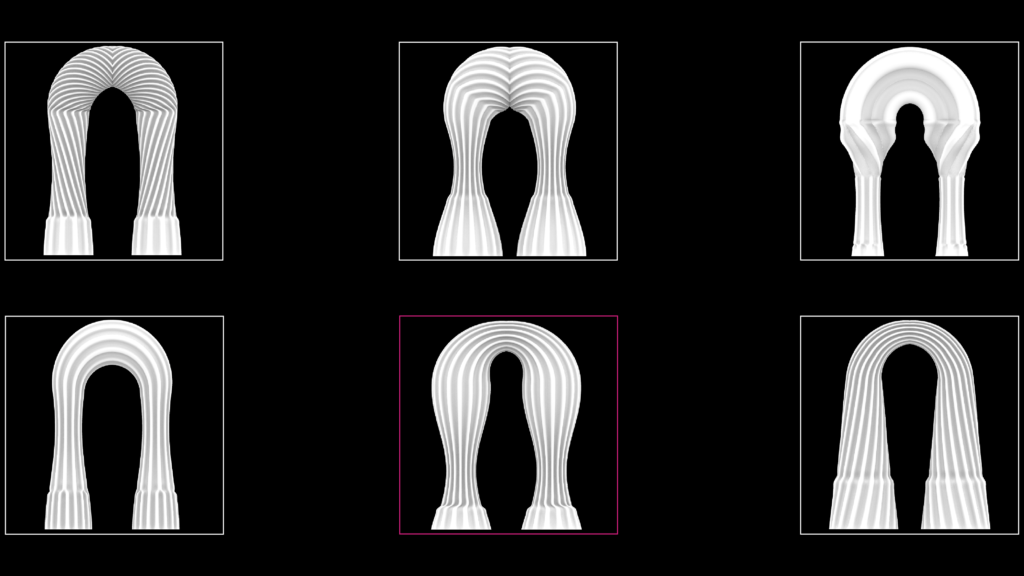
Comparison
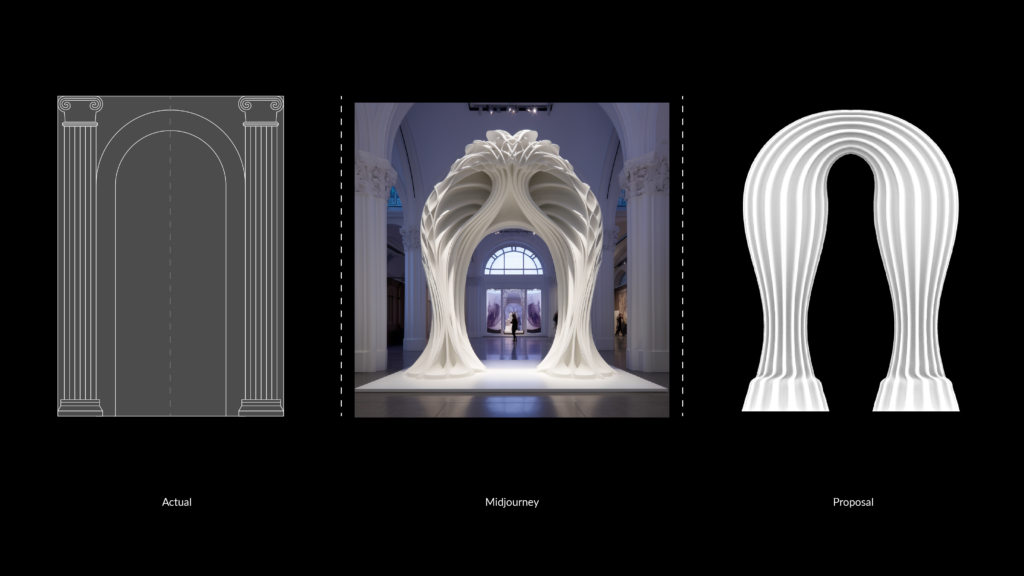
Gothic Facade
Main Characteristics
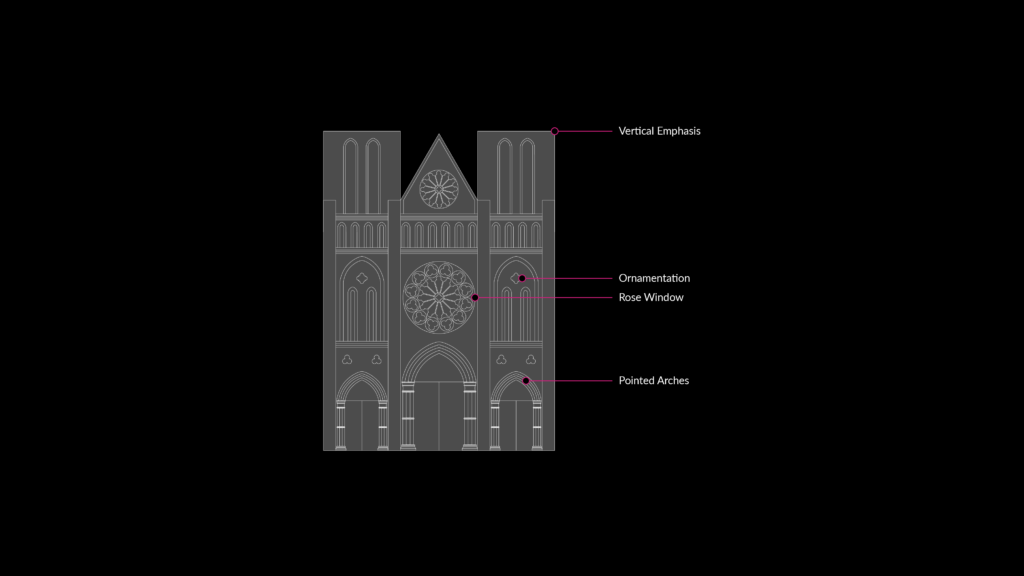
Midjourney
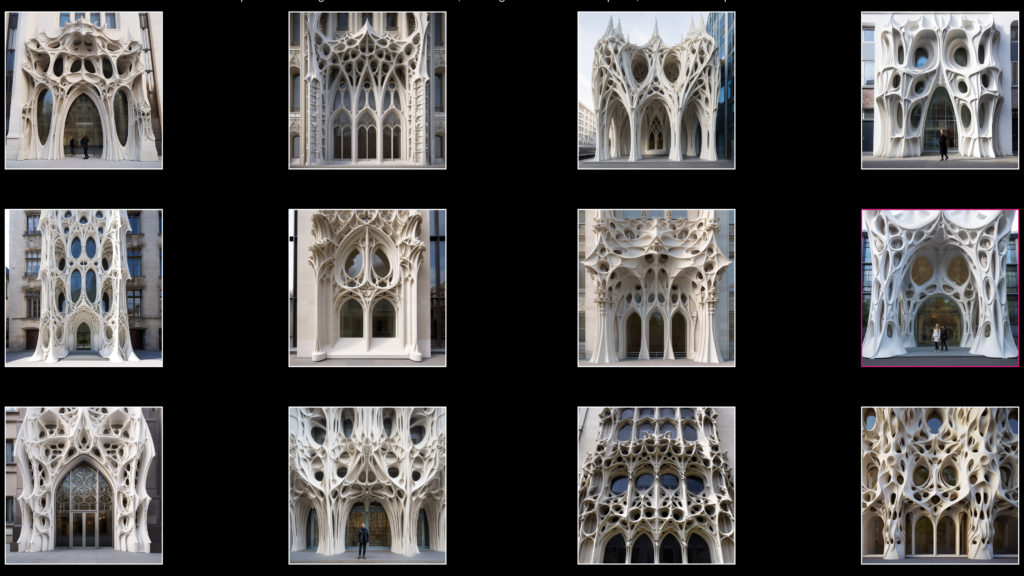
Proposal
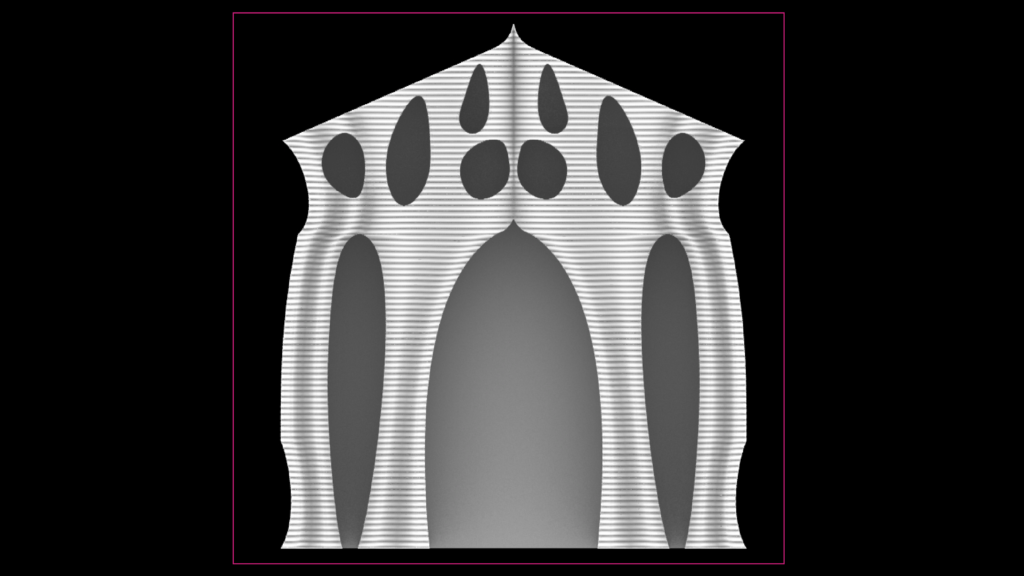
Comparison
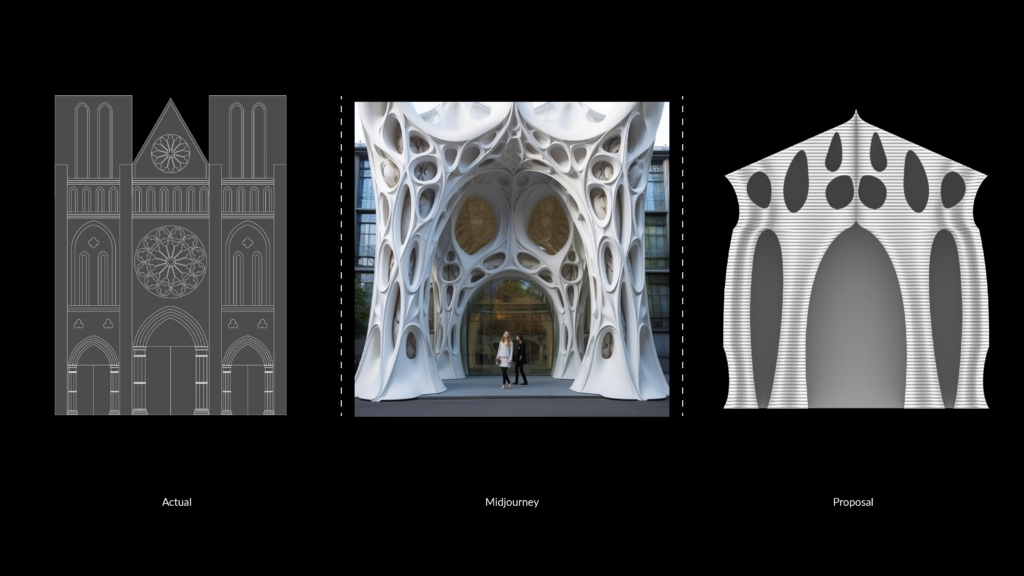
Islamic Facade
Main Characteristics
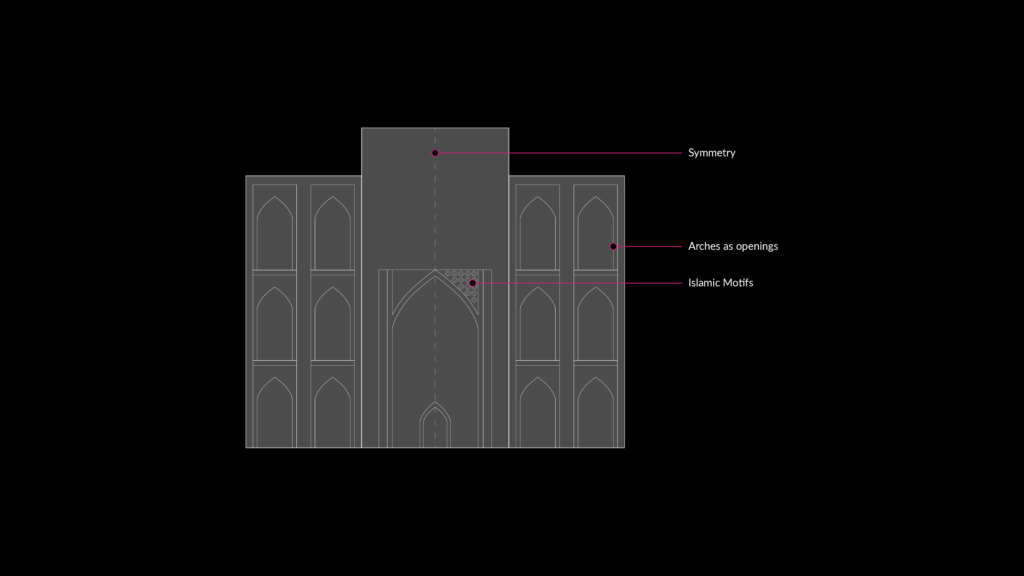
Midjourney
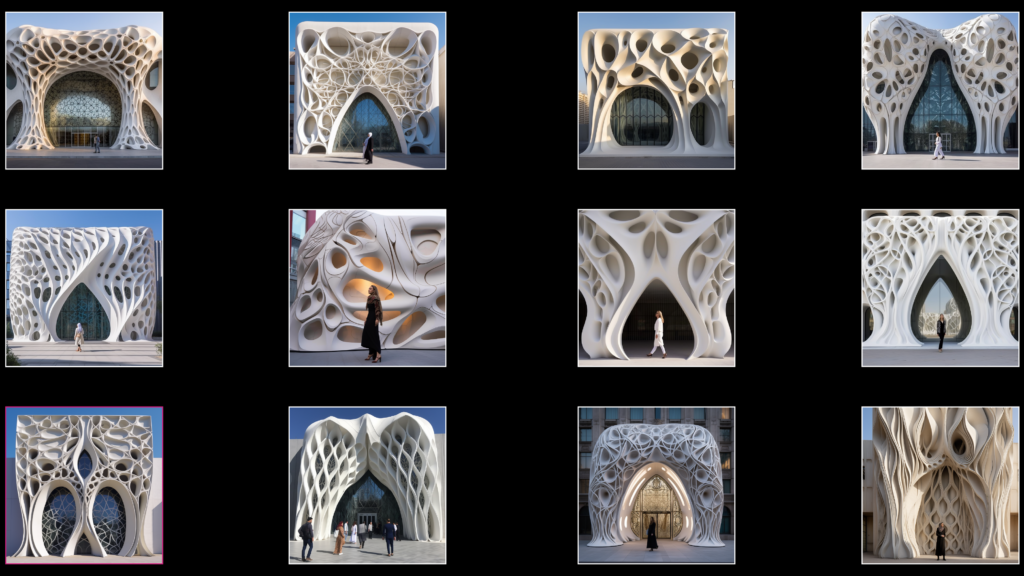
Proposal
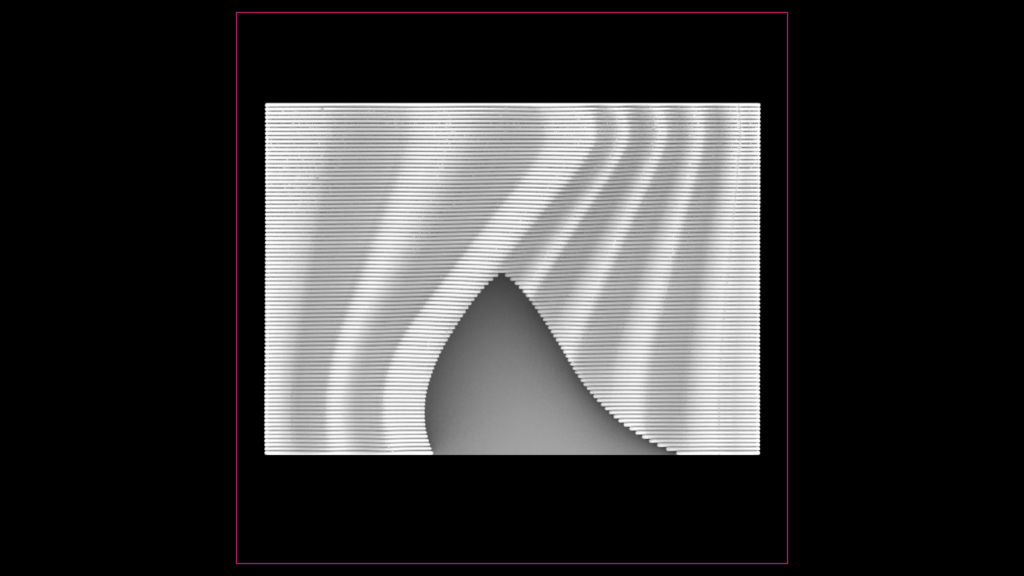
Comparison
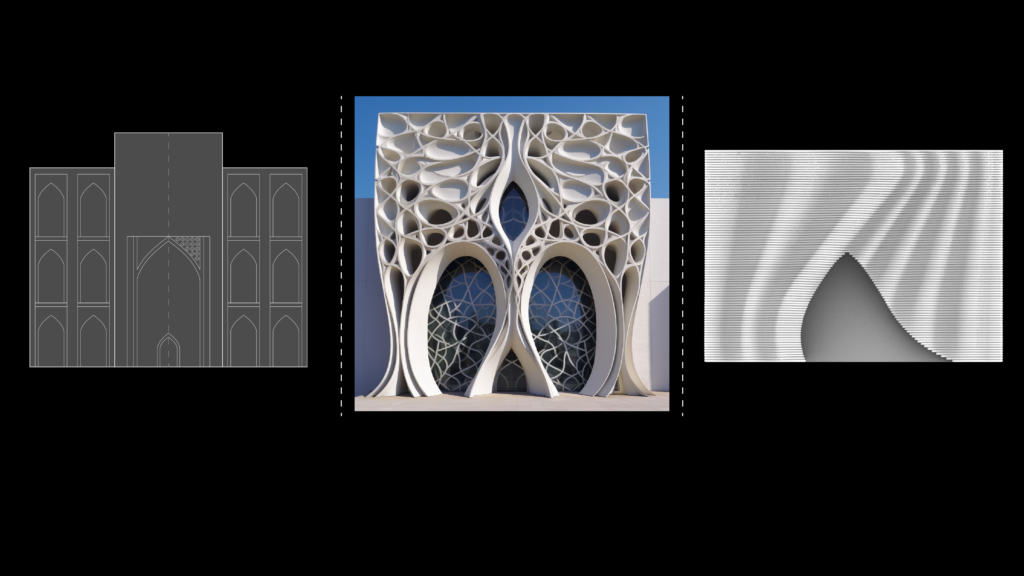
Neoclassical Facade
Main Characteristics
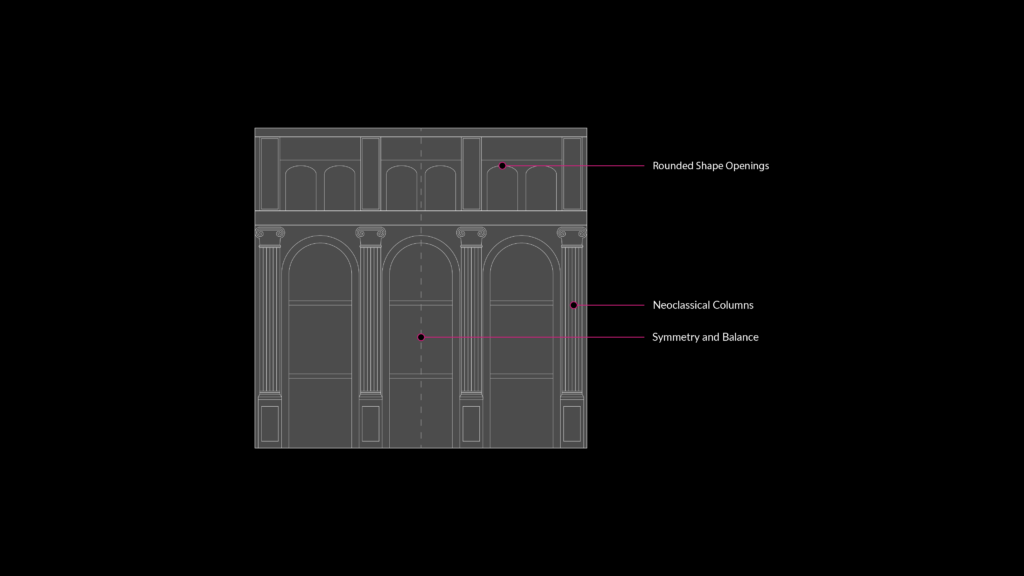
Midjourney
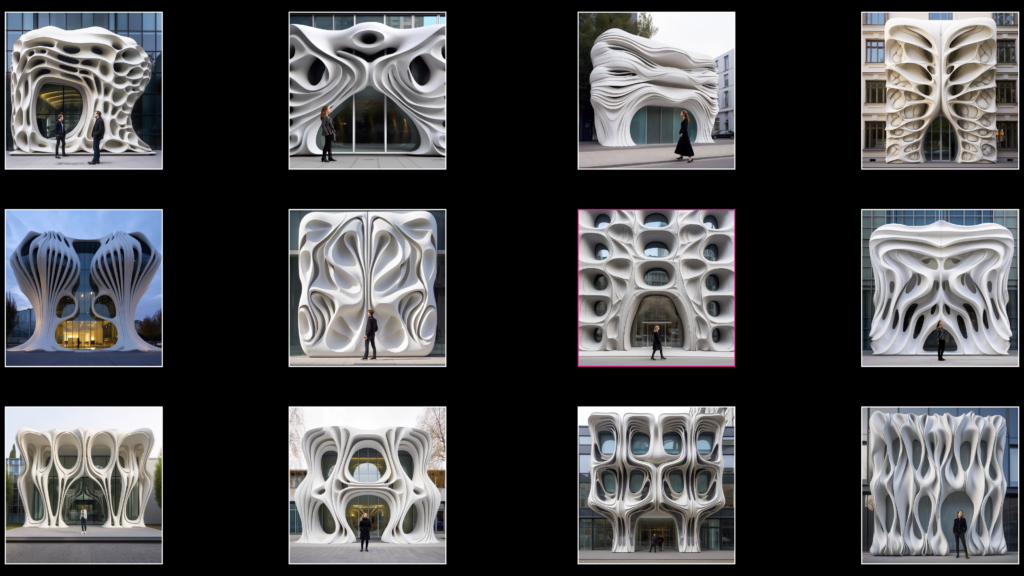
Proposal
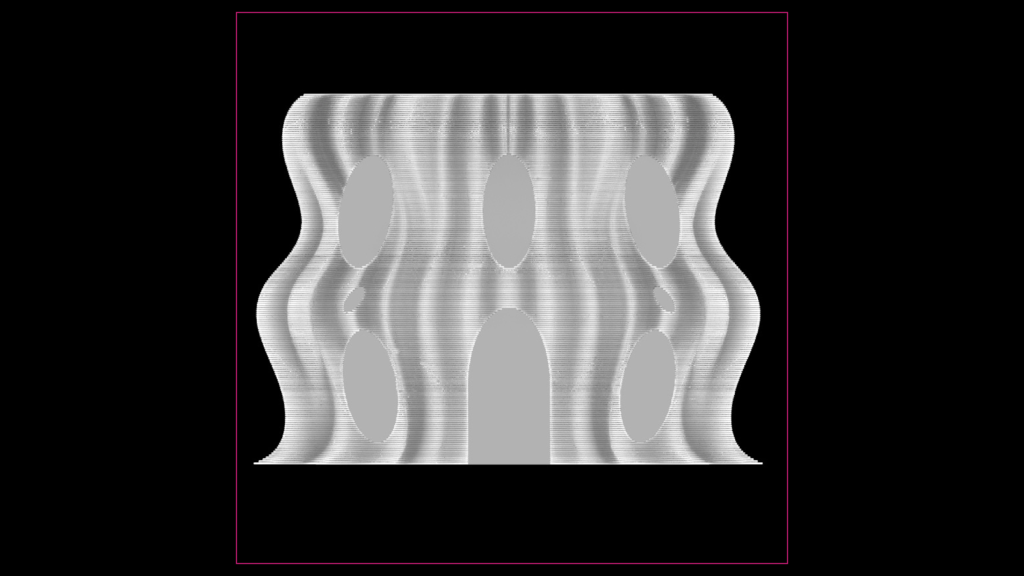
Comparison
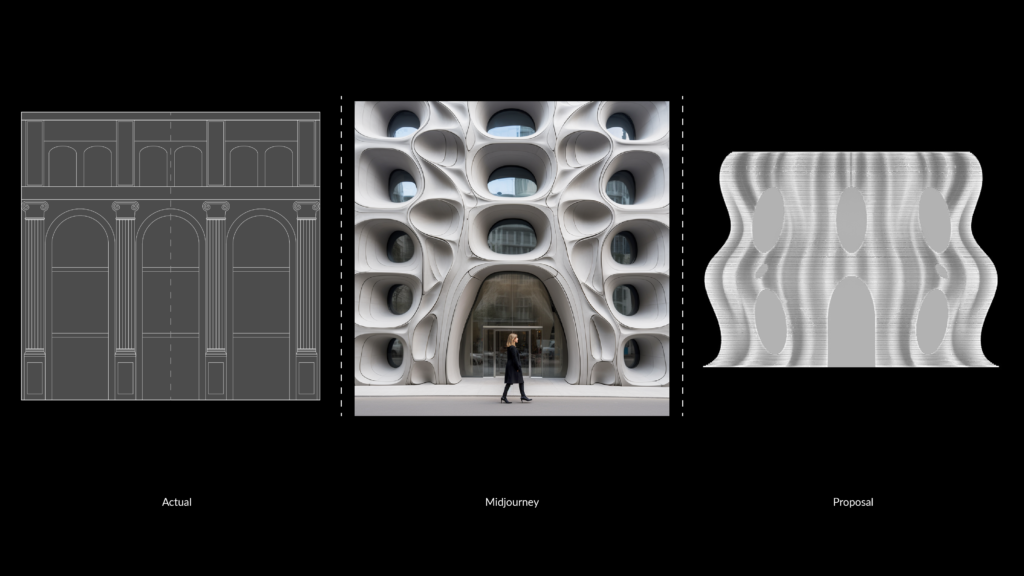
ShapeDiver
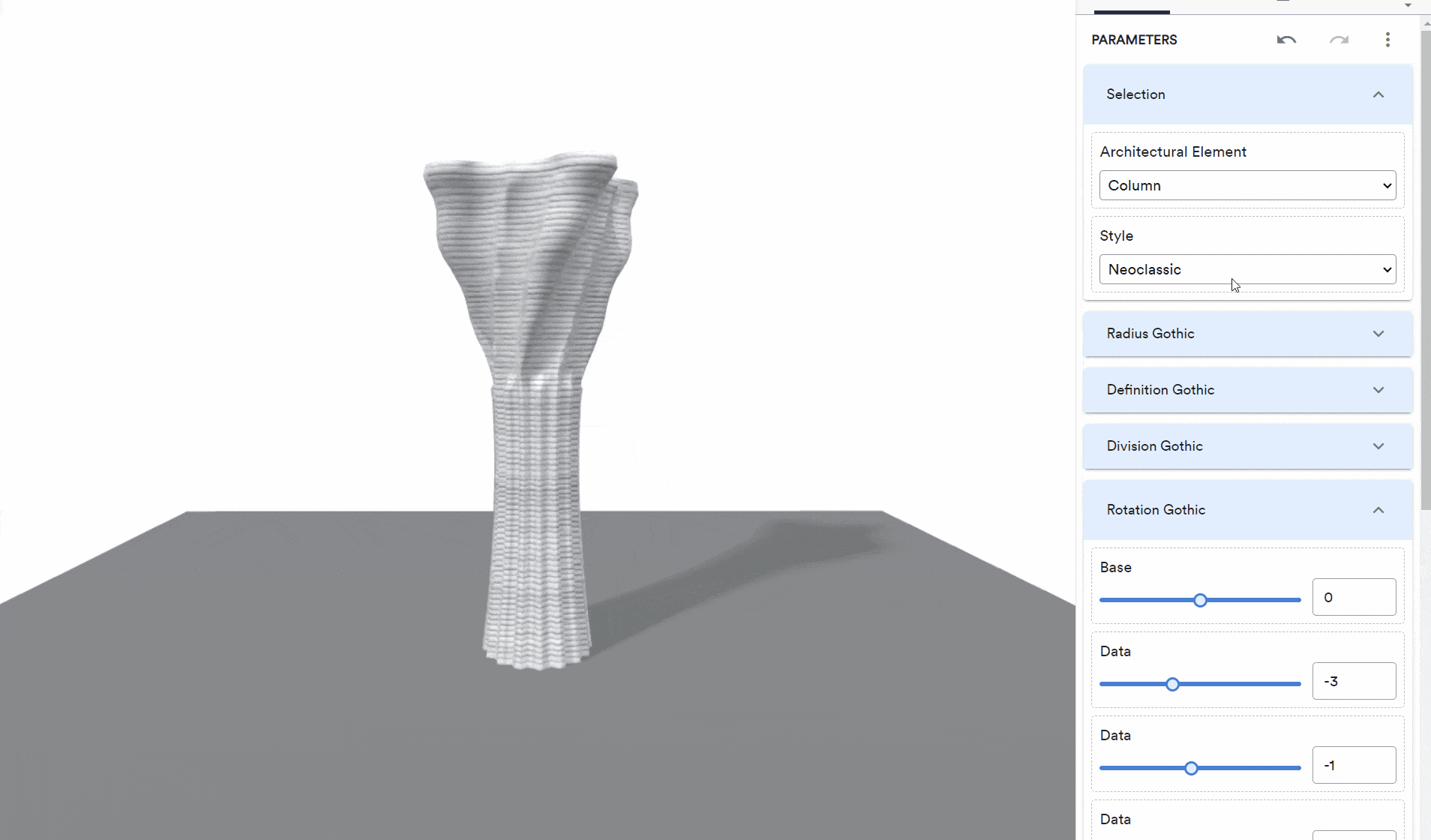
Fabrication
Selected Column
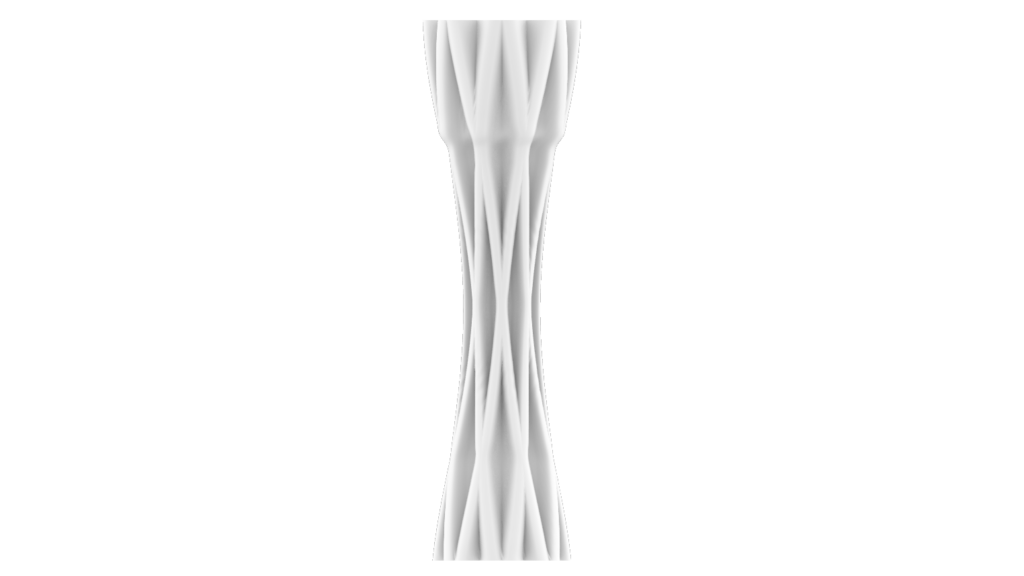
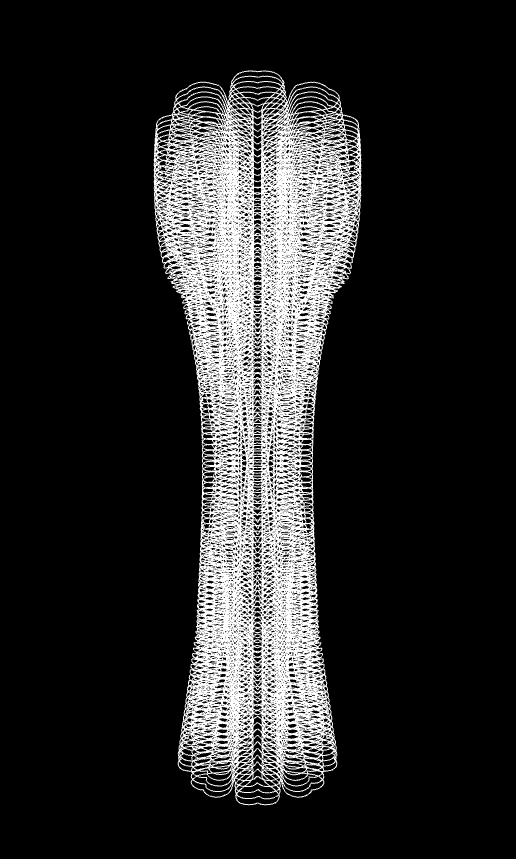

Throughout the research I explored the potential of implementing AI as a design tool in order to generate culture driven architectural elements for 3DCP
And a workflow that can be automize to allows mass customization, and that can be applied in the future of additive manufacturing.
Future Steps?
